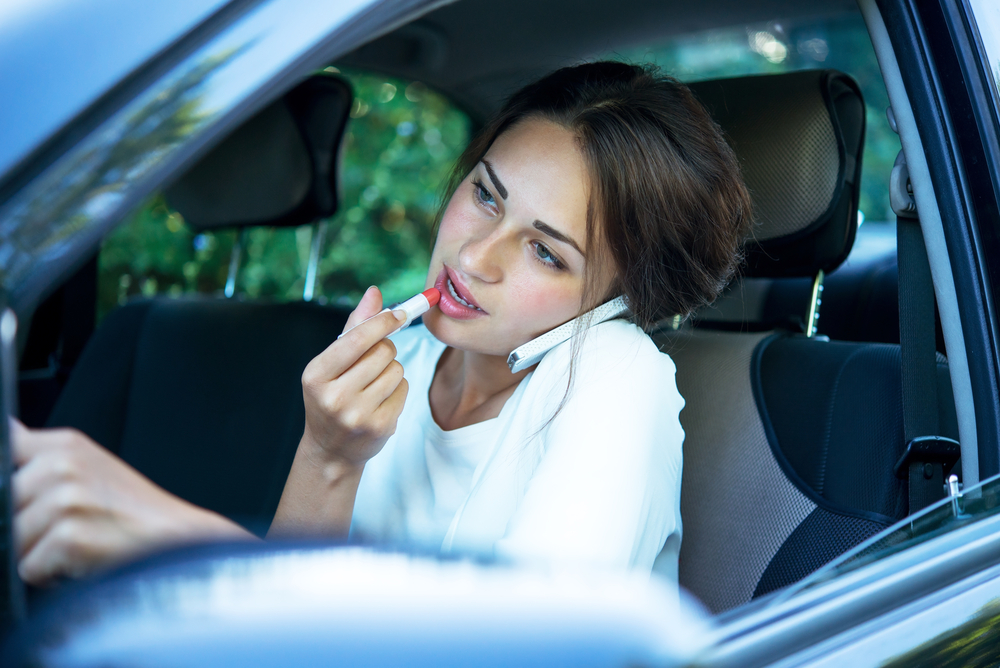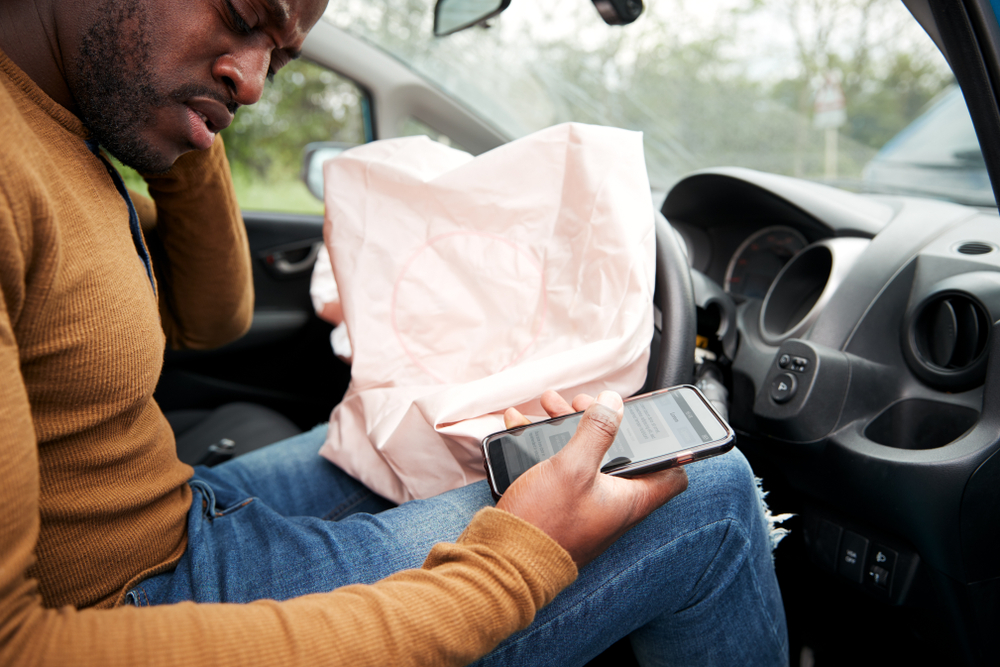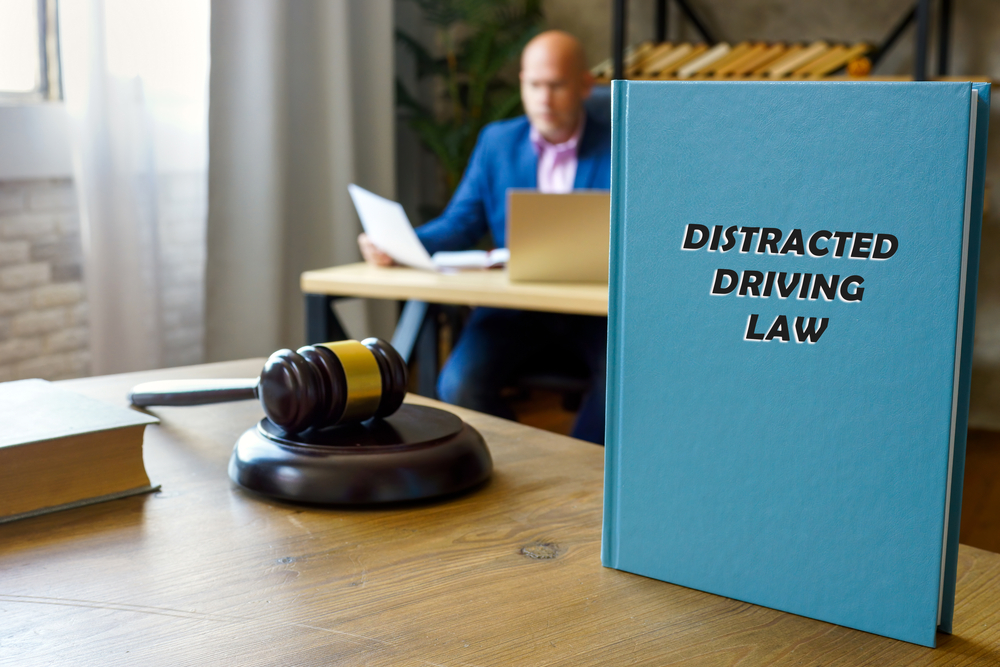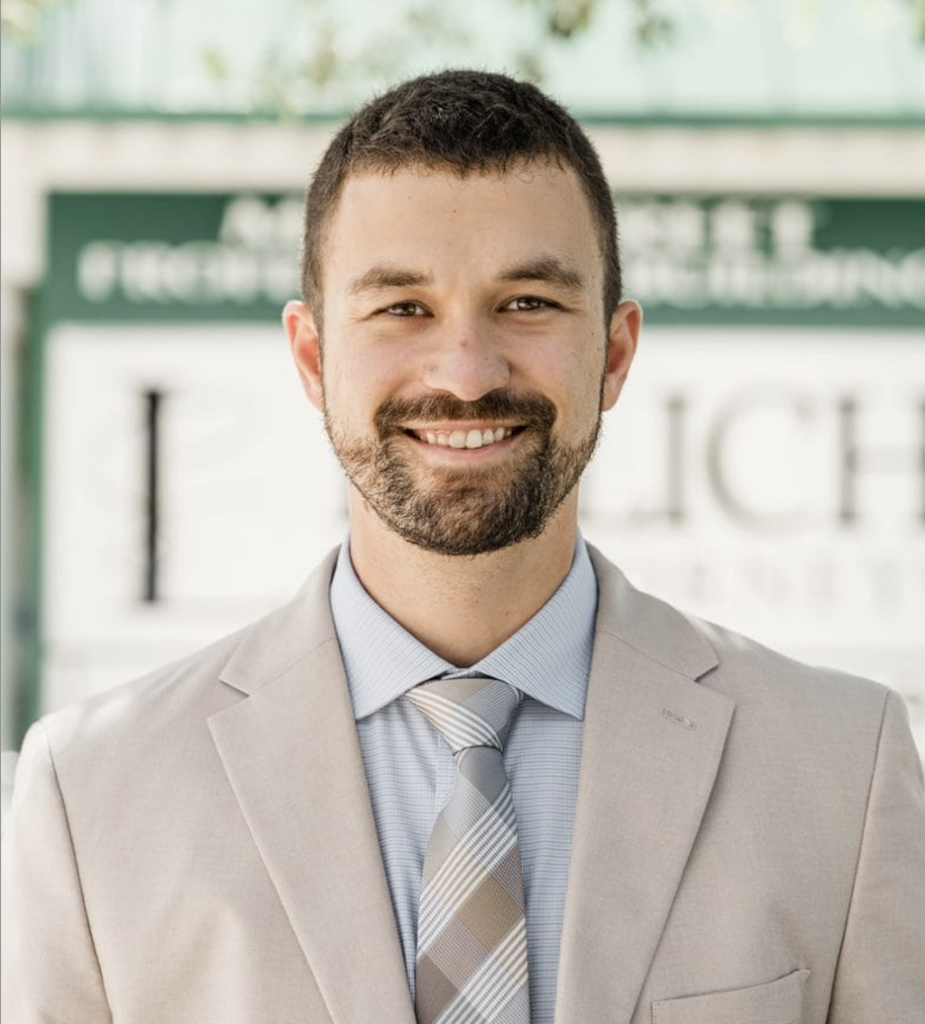We've all seen them – drivers weaving between lanes, not reacting quickly to traffic signals, or slamming on the brakes unexpectedly.
These behaviors often stem from one prevalent and dangerous issue: distracted driving. When other drivers don't give the road the undivided attention it deserves, they put everyone at risk. Victims deserve justice when careless and distracted driving leads to accidents. A Sebastian car accident attorney can provide valuable assistance in securing fair compensation for those affected.
Schedule A Consultation Today!
What is Distracted Driving?
In simple terms, distracted driving is any activity that takes a person's attention away from driving.
Visual

When drivers divert their eyes from the road ahead, even for a few seconds, they can miss events, signals, or obstacles, leading to potentially catastrophic consequences.
Examples: A driver glancing down at their GPS device to set a new destination might miss a pedestrian entering a crosswalk ahead. Also, quickly reading a text message while driving might seem like an insignificant distraction, but it can equate to driving the length of a football field blindfolded at 55 mph.
Manual
Any activity that requires a driver to remove one or both hands from the steering wheel increases the risk of an accident. Without both hands on the wheel, reaction times are slower, and control over the vehicle decreases.
Examples: A driver reaching into the back seat to grab a dropped toy for their child can quickly lose control of their car, especially if a sudden stop from a vehicle in front happens simultaneously.
Similarly, eating a burger or sipping a drink requires the driver to manage the task with one hand, making steering or braking slower.
Cognitive
One of the most subtle forms of distraction is cognitive distraction, which can happen when a driver's mind isn't focused on driving, even if their eyes are on the road and their hands are on the wheel.
Examples: A driver engaged in a heated conversation with a passenger might be staring straight ahead but is mentally processing the argument. They might not register the changing traffic light or the motorcycle weaving between lanes until it's too late.
Daydreaming or thinking about a stressful day at work can also divert attention from immediate surroundings, making the driver oblivious to changing road conditions or hazards.
While many drivers might think they can multitask safely, the reality is that our brains have limits, and trying to juggle driving with any other visual, manual, or cognitive task is dangerous. Recognizing and avoiding these distractions is a step forward in making our roads safer for everyone.
The Consequences Are Real
Every day, innocent people suffer because of someone else's choice to drive distracted, and these aren't just minor fender-benders. Many distracted driving incidents result in severe injuries or even wrongful death.
When someone's negligence behind the wheel changes your life, it can feel incredibly unfair. You were doing everything right, yet you're the one who has to pay the price.
According to the U.S. Department of Transportation's National Highway Traffic Safety Administration (NHTSA), texting and cell phone use while driving has become the most prevalent type of distracted driving.
Here are some of the alarming statistics regarding distracted driving in recent years:
- Distracted driving crashes accounted for eight percent of all fatal crashes, 14 percent of injury crashes, and 13 percent of all police-reported motor vehicle traffic crashes.
- Motor vehicle traffic crashes involving distracted drivers injured 362,415 people and killed 3,522 people.
- Distracted driving caused seven percent of fatal crashes for drivers aged 15 to 20 years. This age group has the most significant proportion of distracted drivers at the time of the deadly accidents.
- In a recent year, 644 nonoccupants (pedestrians, cyclists, and others) died due to a distracted driving incident.
- The estimated economic cost of all motor vehicle traffic crashes in the United States in a recent year was $340 billion, of which $98 billion resulted from distracted driving crashes.
What to Do After an Accident

The moments following a car accident can be chaotic and stressful. However, taking the proper steps can ensure the safety of everyone involved, protect your rights, and facilitate the insurance claim process. Here's a step-by-step guide on what to do after an accident:
Prioritize Safety
If it's safe to do so and you aren't seriously injured, move your vehicle out of the traffic flow to a secure location. If you can't drive the car, turn on the hazard lights and check on other passengers to see if anyone needs medical assistance.
Call the Authorities
Dial 911 immediately, even if the accident seems minor. The police will provide an official report, which your lawyer can use for insurance claims and legal proceedings.
Gather Information
Exchange names, addresses, phone numbers, insurance company details, policy numbers, driver's license numbers, and license plate numbers with all drivers involved. Note the type, color, and model of the vehicles involved. Take photos of the accident scene, including vehicle damage, license plates, injuries, road conditions, traffic signs, and any other relevant details.
Seek Witnesses
If there are bystanders or witnesses, get their names, contact details, and a brief statement of what they saw.
Avoid Admissions of Fault
While being honest with law enforcement is important, avoid admitting fault or assigning blame at the scene. Stick to the facts when speaking with the police and other parties.
Seek Medical Attention
Even if you feel fine, some injuries might not be immediately apparent; therefore, seeing a doctor for a thorough check-up is essential.
Document Everything
Start a file to keep all accident-related documents and notes, including the police report, medical bills, correspondence with insurance companies, and any expenses related to the accident.
Notify Your Insurance Company
Report the accident to your insurance company as soon as possible. They'll guide you on the next steps and what information they need to process the claim.
Consider Legal Representation
If there are injuries, significant damage, or any dispute about the accident, it might be wise to consult an attorney. They can advise you on your rights and ensure you get fair treatment.
Stay Organized and Patient
The aftermath of an accident can be a long process, especially if legal proceedings or insurance disputes arise. Stay organized, keep all related documentation, and be patient as processes play out.
How to Prove Another Driver Was Distracted
After an accident, establishing that the other driver was distracted is crucial in determining fault and seeking compensation, but proving distraction can be challenging.
Here's a step-by-step guide that you and your lawyer can follow to help you build a strong case:
- Police Reports: Always call the police after an accident. They'll create an official record of the accident, sometimes including observations or admissions of distractions like a cell phone in use or food spilled in the driver's lap.
- Witness Testimonies: Bystanders or passengers might have noticed the other driver texting, eating, or adjusting their radio. Collect contact details of potential witnesses at the scene and get their statements in writing.
- Photographic Evidence: The photos taken immediately after the crash can be valuable. They might capture items in the other driver's car (like a phone with an active text conversation or an open makeup kit) that suggest distraction.
- Cell Phone Records: With a lawyer's help, you can subpoena the other driver's phone records. Text or call logs can indicate activity at the time of the crash.
- Surveillance Footage: Nearby businesses or traffic cameras could have captured the incident, and the footage might show the other driver's actions leading up to the accident.
- Vehicle Data: Modern cars often come equipped with data recorders, similar to an airplane's black box. This data can provide insights into the driver's actions, like hard braking or sharp turns, that might suggest distraction.
- Admissions of Guilt: Sometimes, drivers admit fault at the scene, like saying, "I didn't see you because I was checking my phone." Make a note of any such statements and inform your lawyer.
- Expert Testimony: An accident reconstruction expert can analyze the specifics of the crash, such as skid marks or the point of impact. They can use this information to deduce the possible causes, including distraction.
- Social Media and Online Activity: Check the other driver's public social media profiles for posts or updates made around the time of the crash. Some people inadvertently admit fault, like posting a selfie while driving or complaining about dropping food in their lap moments before an accident.
Proving another driver's distraction requires timely evidence collection, legal strategy, and sometimes a bit of detective work. Hiring a lawyer early on is best, as they can gather and present this evidence for you in the most compelling way.
How to Recover Damages for a Distracted Driving Case

If you have been the victim of an accident caused by a distracted driver, you can seek compensation for the damages you've suffered. Here's a simplified guide to help you through the process:
Document Everything
- Photos: Take clear pictures of the accident scene, damage to your vehicle, any visible injuries, and any potential distractions (like a phone or food in the other car).
- Police Report: A lawyer can get a copy of the official police report.
- Medical Records: It is essential to document all medical visits, treatments, and expenses related to injuries from the accident.
Gather Witness Statements
If there were any witnesses, obtain their contact information and a brief statement of what they observed.
Consult an Attorney
Consider hiring a personal injury lawyer experienced in personal injury cases. They can guide you on the best course of action, gather additional evidence, and negotiate with insurance companies on your behalf.
Notify Your Insurance
Report the accident to your insurance company, even if you weren't at fault. They will start the claim process and provide protection if the other driver is underinsured or uninsured.
Determine the Value of Your Claim
Consider tangible costs (medical bills, property damage, lost wages) and intangible ones (pain and suffering, emotional distress).
Negotiate with the At-fault Party
The other driver's insurance company might offer a settlement. You should discuss with your lawyer whether the offer is fair or if you should negotiate for a higher amount.
File a Lawsuit if Necessary
If negotiations stall or the insurance company's offer isn't enough, you may need to file a lawsuit to recover your damages.
Be Patient
These cases can take time, especially if they go to court, so patience is vital to ensuring you get the compensation you deserve.
Receive Compensation
You'll receive compensation for your damages once you reach a settlement or win your case.
The Value of a Lawyer
The aftermath can be overwhelming when you're the victim of a distracted driving incident. Medical bills pile up, your car might need repairs, and you're dealing with emotional trauma. In these times, a lawyer can help you recover compensation for your damages.
Investigation
Establishing liability in an accident can be challenging, so hire a lawyer to investigate post-incident to substantiate claims with tangible evidence.
- Collaborative Work: They often work alongside accident reconstruction experts, medical professionals, and eyewitnesses to build a strong case.
- Evidence Gathering: From obtaining surveillance footage to securing phone records (in cases of texting while driving), lawyers gather evidence to validate your claims.
Negotiation: Standing Up to Insurance Companies
Insurance companies are businesses aiming to maximize profit, often at the expense of victims.
Lawyers act as your advocate during these negotiations.
- Experience on Your Side: Lawyers have dealt with countless insurance adjusters and understand their tactics. This experience allows them to push back effectively against lowball offers.
- Maximizing Compensation: By presenting a compelling case, they ensure you get adequate compensation for medical bills, lost wages, pain, and suffering.
Contingency Fees: A Win-Win Financial Model
Hiring a lawyer might sound like a considerable expense, but many personal injury lawyers work on a contingency fee basis, making their services accessible to all.
- No Upfront Costs: Victims don't need to pay out-of-pocket to get legal representation. This setup ensures everyone, regardless of financial status, can access justice.
- Incentivized to Win: Lawyers only get paid if you win, so they're highly motivated to work and secure a favorable outcome. Their payment is typically a percentage of the settlement or award, usually 25 to 40 percent.

A Car Accident Attorney is Ready to Help
Distracted driving is a choice that too many drivers make daily. When their choices lead to accidents, they should be held accountable.
While no amount of money can truly make up for the pain and inconvenience caused by these accidents, seeking compensation can help alleviate some of the financial burdens that often come with recovery. With the help of a lawyer, you can ensure that you receive the justice you deserve.
